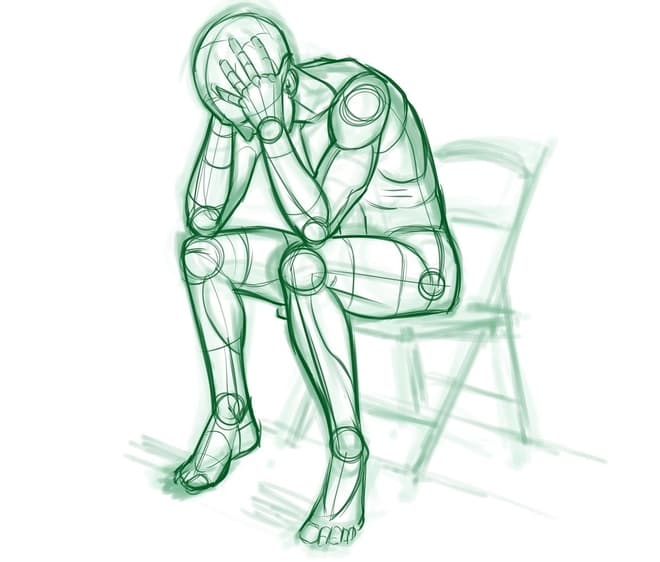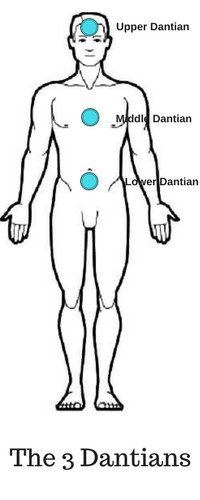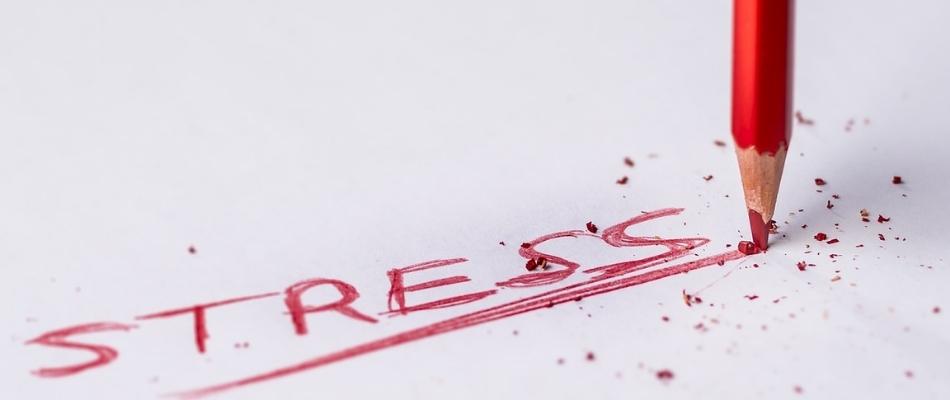Most of us have heard about the close relationship between tai chi and stress reduction. Most everyone also knows that a reduction in stress results in better sleep, weight loss, lower blood pressure, and improved mood. But, just how do the slow movements of tai chi accomplish this? How are tai chi and stress reduction connected?
The close tie between the movements of tai chi and stress reduction is the result of tension being released in the body, an increase in oxygen through deep breathing, an elongated upright posture, twisting and compression that massages the organs, and gaining mental clarity.
I think for many people it is to big of a leap to think that slow movements could bring their blood pressure down or reduce stress. Let’s use our time here to talk about the science that is being conducted on tai chi and stress relief and then use specific examples to show just how tai chi benefits stress reduction.

The Science Behind Tai Chi and Stress Reduction
For many of us out there we get stressed about something and want to reduce it. For some of us though, it is crippling. So I want to start with the science explaining just how does tai chi reduce stress to let you know that I and many researchers are not taking it lightly. Here is a video on physiological research being conducted in the United States. Then I hit the highlights of NIH studies on how tai chi and chi gong reduce stress.
NIH Study How Tai Chi and Chi Gong Reduce Stress
There are several NIH studies showing how tai chi reduces stress. Each one focuses on different aspects of stress to test out in their control groups but they all come to the same conclusion: tai chi relieves stress.
Qigong and Tai-Chi for Mood Regulation
This study was pretty cool because they shared results of interventions that tested tai chi and qi gong against mindful activities and also tested them against movement activities like walking. They wanted to rule out whether it was the mindfulness or movement that was creating the improvement in mood regulation. They found tai chi and qi gong to be better than the movement activities and about on par but better than the mindful activities. In additional to that, they found that qigong had the same effect as cognitive behavioral therapy in one study.
The effect of Qigong has been found to be comparable with that of cognitive-behavioral therapy in significantly reducing depressive symptoms among outpatients with clinical depression and adults with depressive symptoms.
Chan AS, Wong QY, Sze SL, et al. : A Chinese Chan-based mind-body intervention for patients with depression. Journal of Affective Disorders 2012
Tai Chi and Qigong for the Treatment and Prevention of Mental Disorders
This research is unique in that it shows the results of five different studies on stress management. Each study included very different groups. One was a group of people with auto immune disorders. One was an older population averaging 73 years old who practiced for one hour each week. One had 60 year old adults practicing 2 hours each week. The results showed improvements in every group.
Managing stress and anxiety through qigong exercise in healthy adults: a systematic review and meta-analysis of randomized controlled trials
This study searched thirteen databases for randomized controlled trials (RCTs) related to tai chi and qi gong. Their findings? You guessed it.
Two RCTs suggested that qigong exercise immediately relieved anxiety among healthy adults, compared to lecture attendance and structured movements only. Four RCTs suggested qigong exercise relieved anxiety, and three RCTs suggested that qigong exercise reduced stress among healthy subjects following one to three months of qigong practice, compared to wait-list controls.
Managing stress and anxiety through qigong exercise in healthy adults.
What the Science Says About the Effectiveness of Tai Chi
This last study is actually a composite of several studies that is broken up in a really nice way. They list individual studies on Falling and Balance, Pain, Mental Health, and Quality of Life. They list out several paragraphs for each area showing supporting results for using tai chi.
What the East has known for a very long time, the West is now able to accept. I want to end here by sharing a personal story about how I woke up to the positive effects that tai chi had on my outlook at my job and my stress. I was pretty consistent with my practice beforehand. But experiences like this pushed me over to becoming a fulltime practitioner.
Stress is a big also a big component of all illness, including even common colds and flus. In addition to the research, I conducted my own personal experiment on how to never get sick.
Tai Chi Can Be an Effective Stress Reducer
I recently went through a time at work where I really wasn’t motivated. Projects I was part of took on a gruelingly slow pace. Activities I would normally do without any real effort required coffee. And rather than be energized by what I was doing, I was really exhausted by the end of day.
At the time I can assure you that I came up with all sorts of excuses as to what the problem was, none of which were me (of course).
Looking back, the situation really hadn’t changed. Same job, same tasks. But how I related to it or enjoyed it was completely different.
You all know what comes next. Doubt and frustration. Should I change what I am doing? Why is everything an uphill battle? Should I still be doing this job?
Luckily I was a student of tai chi and found that tai chi can be an effective stress reducer in two unique ways:
- Doing the form made me feel better so I new the problems were only situational. It also gave me a break from my repetitive negative thinking.
- Tai chi can be an effective stress reducer also because it teaches us a unique way to problem solve.

In the Chinese system, there are three power centers. The Lower Dantian is central in the body and just below the navel. The Middle Dantian resides at the heart, and the Upper Dantian is behind the center point between the eye brows inside the head. Click here for more on the 3 Dantians.
Using the 3 Dantians to identify what gives you energy and how much you have.
Thinking about where the 3 Dantians are, they are skillfully located in the thinking center (upper), feeling center (middle), and power center (lower). For those of you familiar with meditation, this is also the order that we travel through when we are moving energy through our body. We send energy up the spine into the head, down the front channel through the heart, into the lower dantian at the navel, and back up the spine again.
This creates a perfect metaphor for digesting a problem at work.
We bring a problem up into our mind. We think about it. We react emotionally to whether we want to do it or “have” to do it, and then we “sum up” the energy or “dive right in” based on how we related to it emotionally.
E.g. We bring a problem into the Upper Dantian, move it down to the Middle Dantian and react to it, and then move it into the Lower Dantian to decide what kind of energy we need to complete the task.
Who doesn’t love tangible examples when we are talking about the esoteric?
| Positive Situation | Negative Situation | |
|---|---|---|
| Upper Dantian | I receive an email about returning to work with a client that I really like. I think about the person, how to reply, and my mind automatically assumes the role of remapping out my schedule to make this happen. | A project is entering its seventh month and pretty much everyone is tired and has abandoned it. I have to email people 2-4 times just to get a response. I have meetings that go nowhere. People recommit but nothing happens. I am the one responsible for it and if I set it down I am continually asked what the status is. It is always part of my thought process and on my list of “what I have to do. |
| Middle Dantian | I am happy but a little bit worried about the time commitment. | I am frustrated at myself for not knowing how to proceed. The amount of time and energy needed was completely underestimated and now I feel saddled with it and overwhelmed. |
| Lower Dantian | My excitement gives me a burst of energy which I use to wrap up some other projects to dive into this new thing. | This project takes many early mornings, some weekends, and a near-illegal amount of coffee to complete. Even when it is done there is no celebration. Everyone is just relieved that it is over. |
Studying the 3 Dantians helped me see a clear difference between these two scenarios. There were situations that seemed to produce their own energy and situations that reduced energy. Yes, many and most activities are not on these extreme poles of the spectrum. But wouldn’t it be great if we could spend more time on the positive side?
There was nothing I could do about the “negative” situations that I had already committed to, but here is what I did.
Assessing Old Activities with the 3 Dantians
- I thought about everything that was on my plate and used the above criteria to identify if a task was giving me energy, neutral, or sapping energy.
- For the sapping energy group, I determined if it was emotionally draining or physically draining.
- This was actually the easy part. If I was mad about it or it was frustrating me, I realized that I could just turn that off because it was in my power (heart center).
- If it was just a lot of work (energy center) I could find time and energy to complete it and did get a tiny boost from getting through it.
Here is the big important part: I evaluated new tasks before I started them, did not over-commit, or at least was accepting of the situation and didn’t feel like I was being abused or taken advantage of.
Assessing New Activities with the 3 Dantians
- I let my mind race with all the optimistic and great possibilities.
- If warning bells went off that I wouldn’t like it, not enjoy it, it didn’t align with what was important to my boss, then I shared this before the assumption was made that I would be a part of it.
- I evaluated what kind of energy I needed to get this done. Let’s face it. We have to do things that may not be our favorite. But by thinking about what was needed ahead of time, I was able to spread the tasks across many weeks so I wasn’t slammed at the end. This never happened before because I was avoiding it.
Enthusiasm: from Greek enthous ‘possessed by a god, inspired’
So I thought about my work and why I was so exhausted. “Thinking” about work didn’t involve much action in negative situations until avoidance (feeling) caused so much delay that immediate action (energy) HAD to be taken. I wasn’t truly in control. I was stressed.
The body provides immediate feedback in the form of pains, fluttering, sweating… If we weigh an opportunity with all three thinking centers we can activity choose activities that will make us “possessed by a god.” In less ideal situations that we still have to participate in, we can determine how much thought, emotion, and energy are needed.
There is so much more to talk about here and that’s why I discuss anxiety and depression in two different articles.



Thanks! Very useful info and I am a 40+ year player of TCC. Particularly like the Adya quote at the end.
Glad you found it useful. We continue to debate and discuss applications of the information we encounter while studying the internal arts and hope to make sense for a larger audiences by applying it to real life. All our Best!